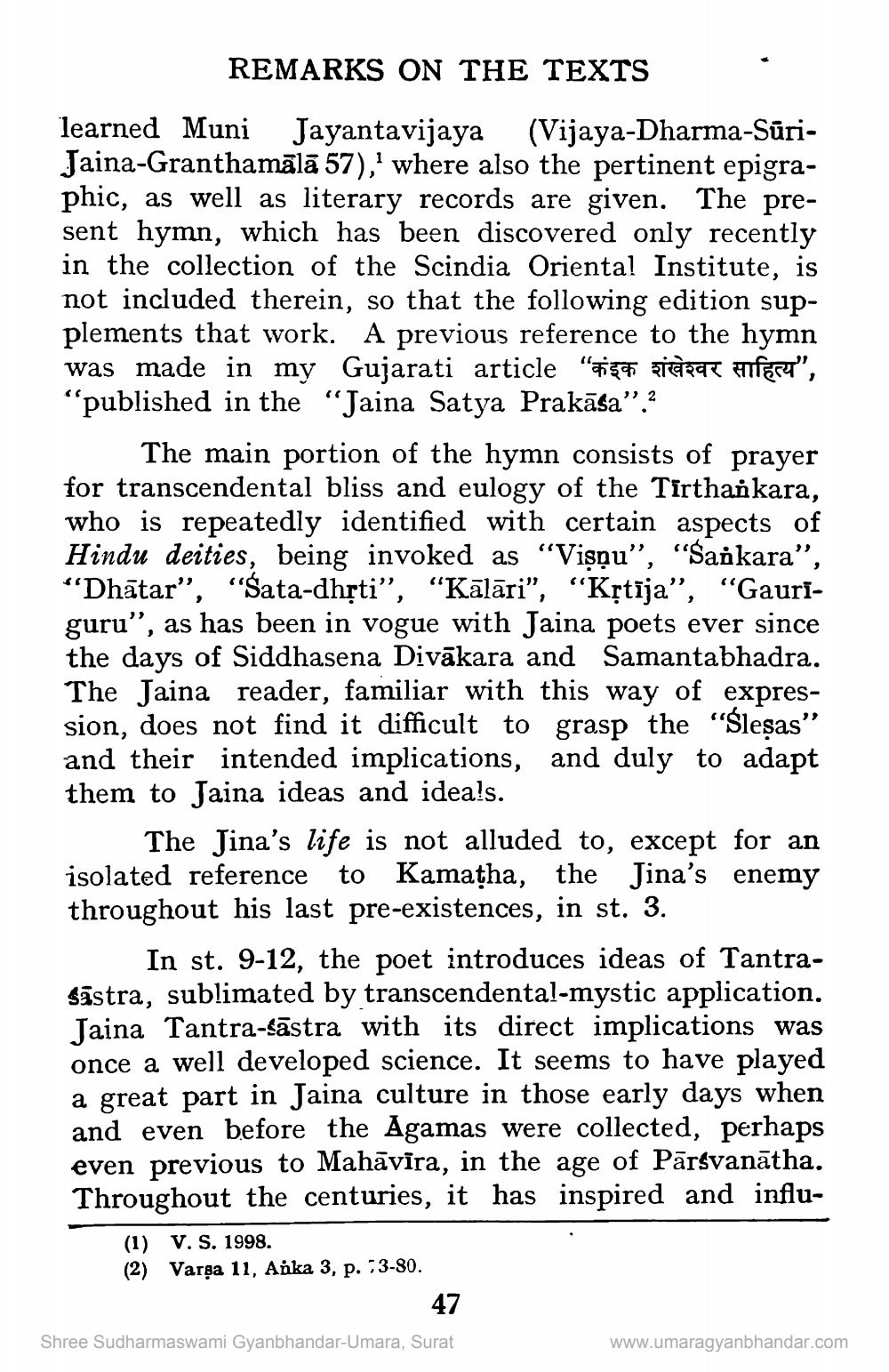________________
REMARKS ON THE TEXTS
learned Muni Jayantavijaya (Vijaya-Dharma-SūriJaina-Granthamālā 57),' where also the pertinent epigraphic, as well as literary records are given. The present hymn, which has been discovered only recently in the collection of the Scindia Oriental Institute, is not included therein, so that the following edition supplements that work. A previous reference to the hymn was made in my Gujarati article "757 ziara Hiru", "published in the “Jaina Satya Prakāsa”.?
The main portion of the hymn consists of prayer for transcendental bliss and eulogy of the Tirthankara, who is repeatedly identified with certain aspects of Hindu deities, being invoked as “Visņu", "Sankara", “Dhātar”, “Sata-dhști”, "Kālāri”, “Kļtīja”, “Gauriguru”, as has been in vogue with Jaina poets ever since the days of Siddhasena Divākara and Samantabhadra. The Jaina reader, familiar with this way of expression, does not find it difficult to grasp the "Ślesas" and their intended implications, and duly to adapt them to Jaina ideas and idea!s.
The Jina's life is not alluded to, except for an isolated reference to Kamatha, the Jina's enemy throughout his last pre-existences, in st. 3.
In st. 9-12, the poet introduces ideas of Tantrasāstra, sublimated by transcendental-mystic application. Taina Tantra-sāstra with its direct implications was once a well developed science. It seems to have played a great part in Jaina culture in those early days when and even before the Agamas were collected, perhaps even previous to Mahāvīra, in the age of Pārsvanātha. Throughout the centuries, it has inspired and influ
(1) V. S. 1998. (2) Varşa 11, Anka 3, p. 73-80.
47
Shree Sudharmaswami Gyanbhandar-Umara, Surat
www.umaragyanbhandar.com




